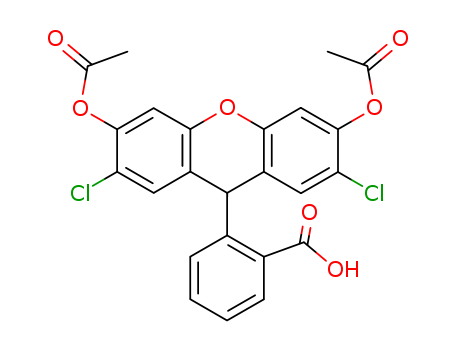Suppliers and Price of 2-(3,6-Diacetoxy-2,7-dichloro-9h-xanthen-9-yl)benzoic acid
- Business phase:
- The product has achieved commercial mass production*data from LookChem market partment
- Manufacturers and distributors:
-
- Manufacture/Brand
- Chemicals and raw materials
- Packaging
- price
- Sigma-Aldrich
- 2′,7′-Dichlorofluorescin diacetate ≥97%
- 250mg
- $ 163.00
- Sigma-Aldrich
- 2?,7?-Dichlorofluorescin Diacetate
- 100mg
- $ 79.92
- Sigma-Aldrich
- 2′,7′-Dichlorofluorescin diacetate ≥97%
- 50mg
- $ 46.00
- Medical Isotopes, Inc.
- 2??,7??-DichlorodihydrofluoresceinDiacetate
- 250 mg
- $ 640.00
- Matrix Scientific
- 2-(3,6-Diacetoxy-2,7-dichloro-9H-xanthen-9-yl)benzoic acid 95+%
- 1g
- $ 1554.00
- Matrix Scientific
- 2-(3,6-Diacetoxy-2,7-dichloro-9H-xanthen-9-yl)benzoic acid 95+%
- 250mg
- $ 594.00
- CSNpharm
- H2DCFDA
- 50mg
- $ 51.00
- Crysdot
- 2-(3,6-Diacetoxy-2,7-dichloro-9H-xanthen-9-yl)benzoicacid 95+%
- 1g
- $ 420.00
- Crysdot
- 2-(3,6-Diacetoxy-2,7-dichloro-9H-xanthen-9-yl)benzoicacid 95+%
- 250mg
- $ 168.00
- ChemScene
- H2DCFDA 99.82%
- 50mg
- $ 60.00
-
Total 70 raw suppliers





